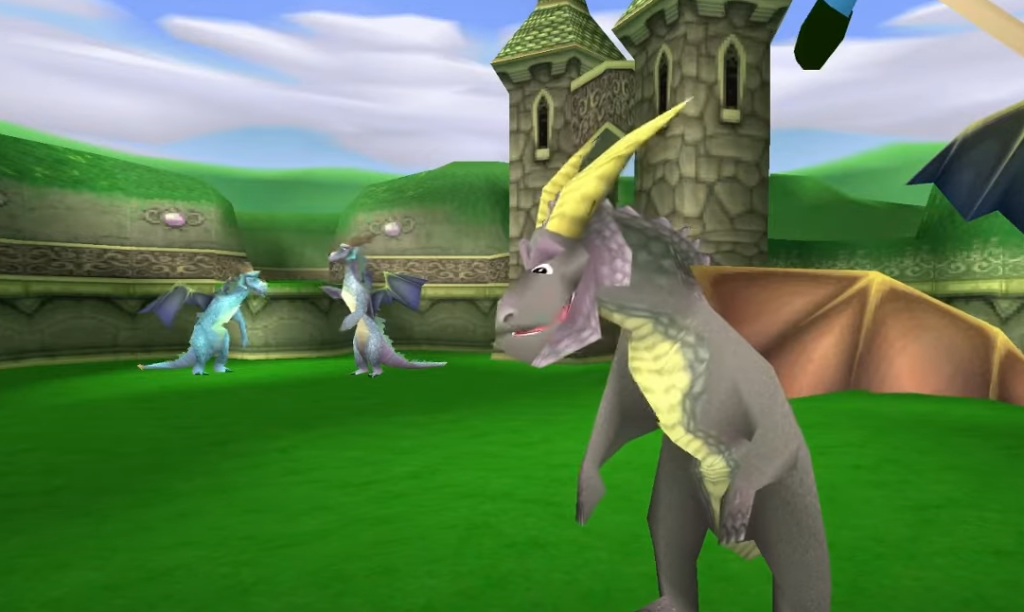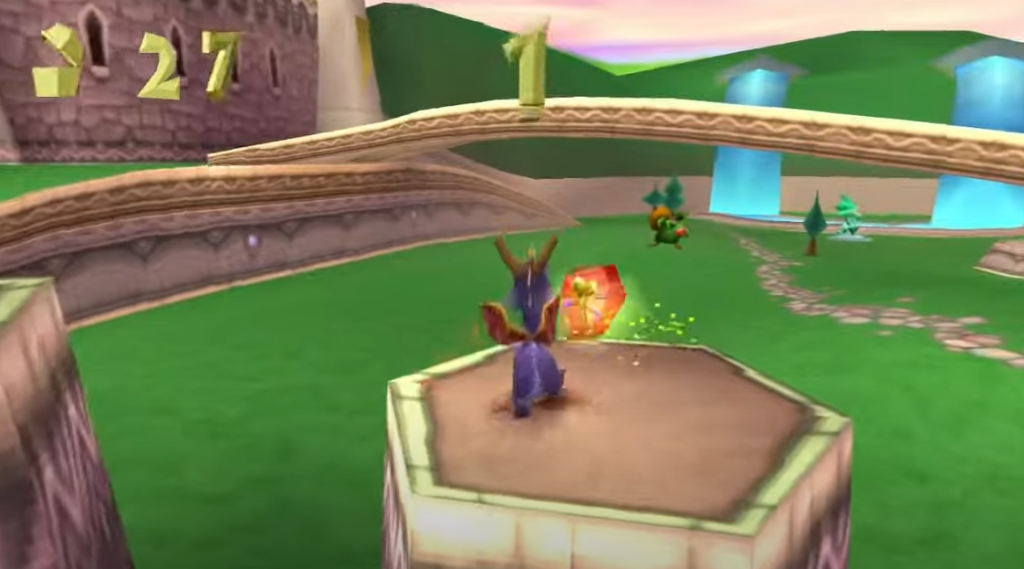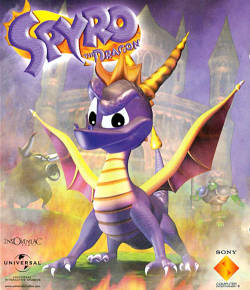When Spyro the Dragon landed on the PlayStation in 1998, it brought something magical to the platforming genre: a whimsical world full of charm, exploration, and personality. Developed by Insomniac Games, Spyro didn’t just compete with the likes of Crash Bandicoot—it carved out its own identity as a colorful, exploration-focused adventure that still holds up today.
Story
The setup is simple but effective: the Dragon Kingdom has been turned to chaos after the evil Gnasty Gnorc traps the dragons in crystal. It’s up to Spyro, a small but spunky purple dragon, to free his kin, reclaim stolen treasure, and take down Gnasty himself. The story isn’t deep, but it doesn’t need to be—it’s the perfect excuse to dive into the beautifully crafted worlds and start collecting everything in sight.

Gameplay
Spyro the Dragon is all about exploration. Each level feels like a mini sandbox, encouraging you to glide, charge, and flame your way through enemies while uncovering secrets. The controls are tight and responsive, with Spyro’s abilities—charging, gliding, and breathing fire—feeling intuitive and fun to use.
The game’s focus on collecting gems, freeing dragons, and chasing elusive egg thieves scratches that completionist itch without feeling like a chore. It’s rewarding to scour every corner of a level, and the open-ended design encourages experimentation. Whether you’re gliding to a seemingly unreachable platform or figuring out how to defeat a tricky enemy, the gameplay strikes a perfect balance of challenge and accessibility.

Graphics and World Design
For its time, Spyro the Dragon was stunning. The vibrant color palette and detailed environments brought the Dragon Kingdom to life in a way that felt magical. Each world—from the grassy Artisans’ hub to the darker, more menacing Beast Makers’ realm—has its own unique aesthetic and vibe, ensuring the experience never feels repetitive.
The character design is equally charming. Spyro himself is full of personality, with his sassy animations and expressive face making him an instantly likable protagonist. Even the enemies, while simple in design, are memorable and fit perfectly into the whimsical tone of the game.
Soundtrack
The soundtrack, composed by Stewart Copeland (of The Police fame), is nothing short of iconic. The music perfectly complements each level’s theme, blending atmospheric melodies with energetic beats that make exploring feel like an adventure. The soundtrack is so good it’s worth revisiting even outside the game.
Legacy
Spyro the Dragon didn’t just succeed—it set the stage for a beloved trilogy that would become a cornerstone of 90s gaming. The remastered Spyro Reignited Trilogy proves the original’s design and charm are timeless, introducing Spyro to a new generation while giving longtime fans a nostalgia-filled trip back to the Dragon Kingdom.

Verdict
Spyro the Dragon is a near-perfect platformer, offering a mix of exploration, challenge, and charm that few games of its era could match. While the story might be simple, the gameplay, world design, and soundtrack more than make up for it. Spyro’s first adventure is a treasure worth collecting, and it remains a must-play for fans of classic platformers.
Score: 9/10
Other relevant posts:
- Mischief Makers – A Shake-Up on the N64
- Conker’s Bad Fur Day: The N64’s Foul-Mouthed Masterpiece
- Banjo-Kazooie – A Magical Adventure
- Spyro the Dragon – A Treasure Worth Collecting
- Star Fox 64 – A Space Odyssey
